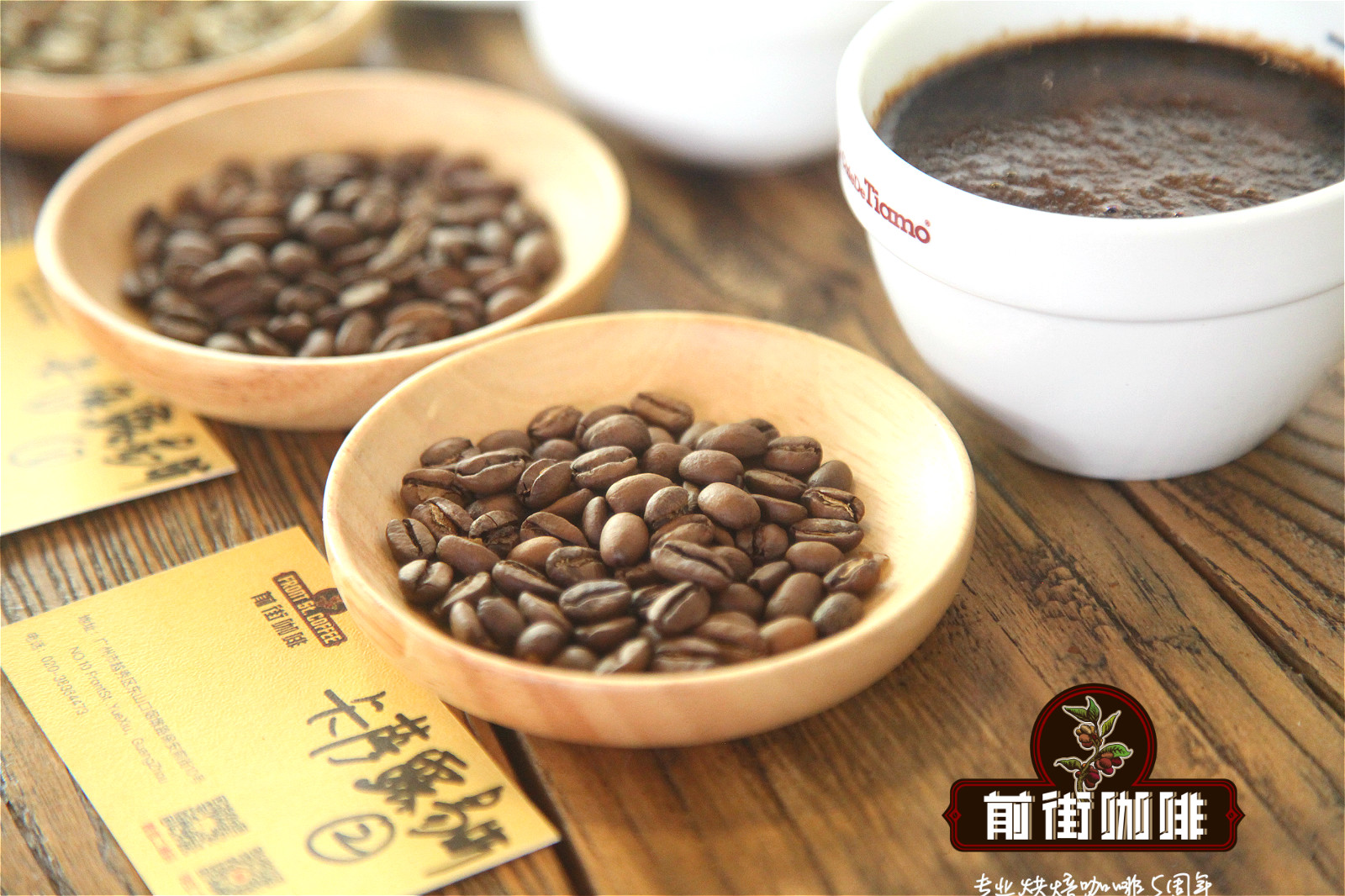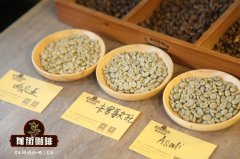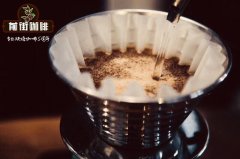Is the coffee better than a geisha called Sakuran Coffee? what's so good about it?

Professional coffee knowledge exchange More coffee bean information Please pay attention to coffee workshop (Weixin Official Accounts cafe_style)
A flower, literally, is a coffee bean with a "floral overflow."
It's not true. The flower aroma of Huakui was not strong, but the fruit aroma was stronger, such as passion fruit, strawberry, mango, jackfruit, citrus.
So why is this bean from Ethiopia called "flower head"?
Native coffee trees at 2,000 meters
GUJI is Ethiopia's largest coffee-producing region, and the flower head comes from Hambella, one of GUJI's sub-regions.
Hambera is governed by Oromiyaa, Ethiopia's southernmost administrative state, and is located on the west side of Kochore, a sub-producing area of Yegashefi. It is adjacent to Shakiso in the east, Uraga in the south and Kercha in the north. Shakiso, Uraga and Kercha are all sub-regions of Guji. According to statistics, there are about 20 treatment plants in Hambera, which are distributed in different villages and estates in sub-production areas, and the scale is also different. DW Coffee Export (described below) has a core production area Dimtu in Hamberra, Dimtu's annual coffee production is about 1100 tons. There are four processing plants in Dimtu area, namely Buku Abel, Buku Saysay, Haro Soresa and Tirtiro Goye, among which only the sun-cured coffee produced and processed by Buku Abel Estate is the "flower", so Buku Abel Estate is also known as the "flower manor".
Huakui Manor is located halfway up the mountain, planting up to 2000 meters above sea level, covering an area of about 80 hectares, belonging to the local DW company. The woodlands surrounding the Estates are overgrown with sugar cane and Ethiopian bananas, and the coffee on the estate has a similar flavor. Under the influence of high altitude and microclimate, Huakui Manor breeds coffee beans with unique flavor.
A small village that became a "flower queen"
Buku Abel is a small mountain village surrounded by mountains. It originally had no manor or treatment plant. It all started with the lush native coffee trees on the back hill of the village.
These native coffee trees are unique to Ethiopia and by December they are full of red coffee berries. Villagers come to the back mountain, pick the red fruits, sift them out of defects, and then put them on the African sun bed at the entrance of the village for sun treatment.
The processed coffee beans are converted into money, which becomes the economic source of the villagers and feeds the whole village. Every year, the area behind Buku Abel gradually becomes Buku Abel Coffee Farm, and the area where African sunbeds are neatly arranged at the entrance of the village becomes Buku Abel's processing plant.
日晒,不仅仅是干燥
The sun treatment at Flower Queen Manor is very particular. Only when the red fructose reaches 30, they meet the picking standards and can be subjected to sun treatment.
The first two days of sun exposure are very important, and the humidity of the red fruit must be maintained at a certain value. Under such conditions, the fructose in the red fruit will begin to ferment. In addition to humidity, temperature is also one of the factors affecting coffee bean processing. During the coffee harvest season every year, Ethiopia has a cool climate, and the night temperature of the treatment plant is about 12 degrees Celsius. The coffee beans on the drying bed avoid excessive fermentation and odor due to the lower temperature. At noon, when the temperature is higher, the coffee red fruit is blocked to prevent sunburn; at night, to prevent showers from wetting the coffee fruit, the surface is covered with thick plastic cloth for protection.
After about 18 days of careful cooking, the moisture content of raw beans is reduced to about 13%, and the sun treatment is completed. Green coffee beans are put into sacks and stored in warehouses for 50 days to further reduce their moisture content. The moisture content of raw beans dropped to about 11%, transported to the treatment plant for shelling, grading and marketing.
花魁的幕后推手
Flowerheads Manor belongs to the Dense family, which has grown coffee for generations. In addition to Hambera, the Dense family has large coffee estates and more than 10 processing plants in Guji, Yega Shefi and Sidamo.
In recent years, the family has been constantly looking for and acquiring high-quality coffee producing areas and building processing plants near the producing areas. The Dense family founded DW Coffee Export in 2015 and began to trade international raw beans.
This breaks with years of family practice of selling all coffee beans to the Ethiopian Commodity Exchange (ECL), which is responsible for exports. The flowers we drink follow the "traceability" loop of fine coffee.
Why is it called "beauty"?
Huakui is the name given to this coffee bean by the Chinese who came into contact with it for the first time.
In February 2017, a sun-baked coffee from Buku Abel Estate in Hambera won the Ethiopia National Taste of Harvest Competition. Four months later, Li Jianfei became runner-up in the final of the China Division of the World Coffee Brewing Competition with this Ethiopian sun-baked coffee. The result caused a stir because it broke Rose Summer's monopoly on brewing competition and became the only coffee that could compete with it.
The English name Geisha means "geisha" in Japanese, while in Chinese culture, top geisha are called "flower girls." When locals first came across the sun-baked coffee from Buku Abel Estate in Hamberra, they thought the bean had the potential to become a top-tier geisha if it was carefully handled. Therefore, they named it "Flower Chief," which means "the head of flowers, enchanting" and hoped that it would compete with Rose Summer in the same field and compete for beauty.
Which do you prefer, flower or rose?
Important Notice :
前街咖啡 FrontStreet Coffee has moved to new addredd:
FrontStreet Coffee Address: 315,Donghua East Road,GuangZhou
Tel:020 38364473
- Prev

Are Sakui and Rosa the same Coffee? the name of Sakui Coffee comes from the Story
Professional coffee knowledge exchange more coffee bean information Please pay attention to the coffee workshop (Wechat official account cafe_style) boutique coffee accounts for only 10% of the global coffee production, China's flexible production and local roasting is underdeveloped, as a result of 1.4 billion Chinese people can drink fresh boutique coffee less than 1/1000. If you are a caffeine, you will die if you don't drink coffee, then you are right to come here! By
- Next

Is Ecuadorian coffee expensive? where is the origin of the story of coffee in Giant Turtle Island, Ecuador?
More information about coffee beans Please follow Coffee Workshop (Wechat official account cafe_style) as one of the best Arabica coffee producers in the world, Ecuador's unique ecosystem advantages make its coffee from different coffee producing areas have a unique taste. That's why coffee made from Ecuadorian coffee beans is used.
Related
- How did the Salvadoran coffee industry develop in Central America?
- What exactly does the golden cup extraction of coffee mean?
- The Origin of Coffee flower
- [2023 Starbucks World Earth Day] there are more meaningful things besides free Starbucks coffee!
- What kind of coffee is there in Spain? 9 Flavors of Spanish Coffee
- Aromatic African coffee| Kenya's coffee culture and historical production area
- Liberica Coffee Bean knowledge: the characteristics of Liberian Coffee beans of the three original species of Coffee beans
- The origin and formula of Spanish latte introduces the taste characteristics of Bombon coffee in Valencia, Spain.
- How to adjust the solution of over-extracted coffee
- What is the tasting period of coffee beans? What is the period of coffee and beans? How should coffee wake up and raise beans?

